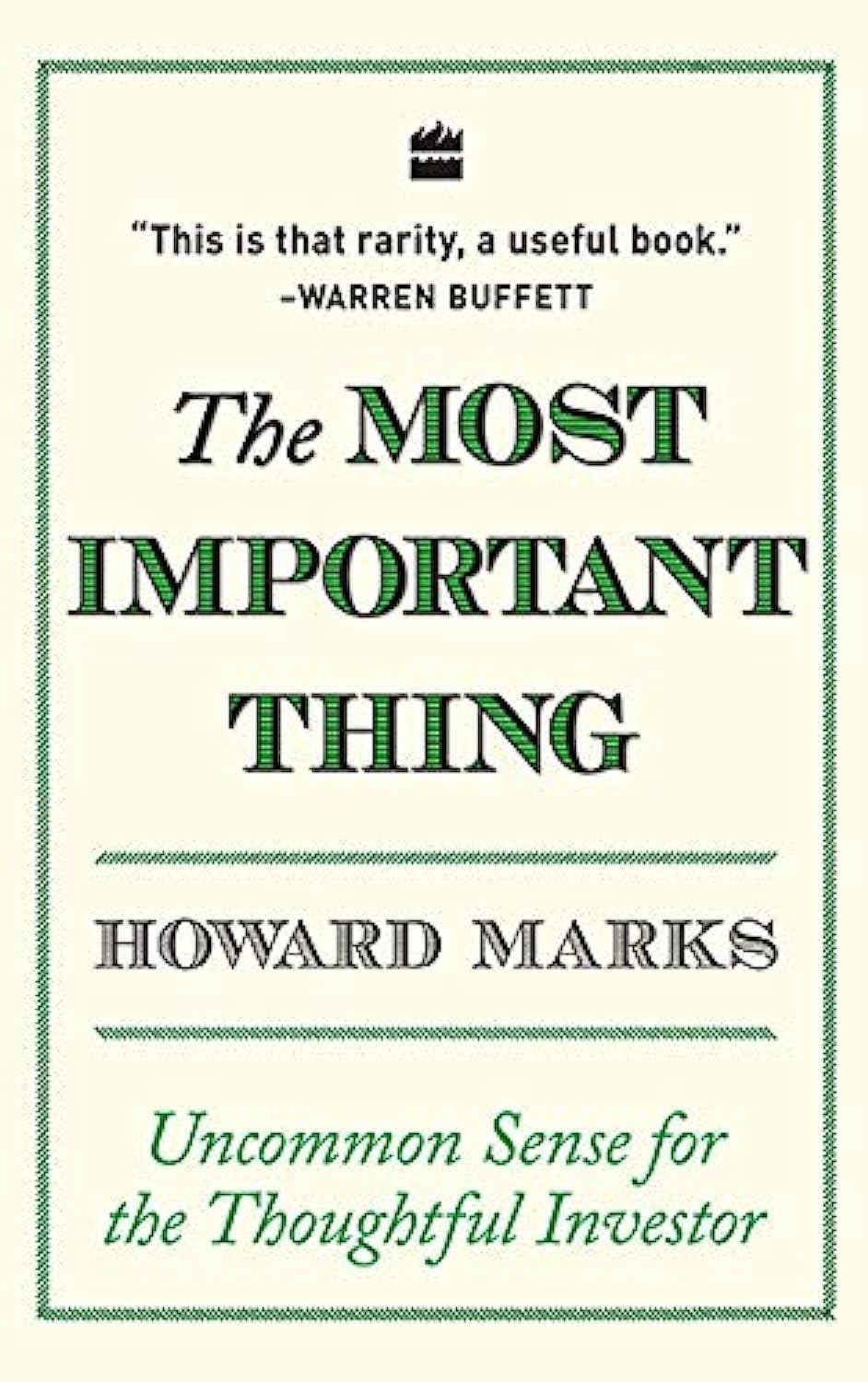Introduction: Why This Book Stands Apart in the Investing Canon
Howard Marks’ The Most Important Thing isn’t just another investing book – it’s a philosophical manifesto for value investors. As co-founder of Oaktree Capital Management, one of the most successful distressed debt investment firms in history, Marks brings a unique perspective shaped by decades of navigating market cycles. Unlike theoretical finance texts, this book offers battle-tested wisdom from someone who’s survived and thrived through multiple financial crises. What makes this work truly exceptional is its focus on investor psychology and market behavior rather than complex formulas. Marks reveals how superior returns come not from predicting the future, but from understanding human nature and capitalizing on the mistakes of others. This review will explore the book’s most powerful concepts in depth, providing actionable insights for investors at all levels.
1. The Art of Fishing in the Right Pond: A Deep Dive into Contrarian Investing
The Psychology of Market Inefficiency
Marks builds on Benjamin Graham’s concept of Mr. Market to explain why certain ponds remain underfished:
- Behavioral biases (herd mentality, recency bias, overconfidence)
- Structural constraints (institutional mandates, career risk)
- Information asymmetry (complexity creates opportunity)
Case Study: The Loomis Opportunity
The book doesn’t just preach theory – it shows how to apply these principles. Marks discusses how businesses like cash transit (exemplified by Loomis) become overlooked:
- Perceived obsolescence: Markets overestimate cashless society timelines
- Regulatory moat: High barriers to entry protect existing players
- Cash flow stability: Recurring revenue streams get discounted
Advanced Strategy: The “Uncomfortable” Portfolio
Marks suggests maintaining a “barbell” approach:
- 70% in high-quality compounders
- 30% in deeply contrarian, uncomfortable ideas This balances stability with explosive upside potential
2. Second-Level Thinking: Developing the Investor’s Edge
The Intellectual Framework
First-level thinking says: “This is a good company; I should buy” Second-level thinking asks:
- “How is this different from consensus?”
- “What’s already priced in?”
- “Where could consensus be wrong?”
Practical Application: The AI Investment Paradox
Using current market conditions as an example:
- First-level: “AI will transform everything → Buy AI stocks”
- Second-level:
- “What adoption hurdles aren’t being considered?”
- “How will margins evolve as competition increases?”
- “What’s the terminal value of these businesses?”
The Mental Models Behind Superior Thinking
Marks introduces crucial frameworks:
- Inversion: Start by identifying how to lose money, then avoid those paths
- Probabilistic thinking: Assign likelihoods to various outcomes
- Scenario analysis: Map different future states and their implications
3. The Limits of Knowledge: Building an Uncertainty-Proof Strategy
The Forecasting Fallacy
Marks presents compelling data showing:
- 92% of economist predictions fail to foresee recessions
- Only 3% of sell-side price targets prove accurate
- Even correct macro calls often lead to wrong investment decisions
The Knowable vs. Unknowable Spectrum
| Knowable | Partially Knowable | Unknowable |
|---|---|---|
| Company financials | Industry trends | Macro shocks |
| Management quality | Technological shifts | Black swans |
| Valuation metrics | Regulatory changes | Geopolitical events |
The Research Process That Matters
Marks advocates for:
- Deep due diligence (300+ hours per idea)
- Management evaluation (track records, incentives)
- Historical analysis (how similar situations resolved)
4. Performance Evaluation: Separating Skill from Luck
The Track Record Deconstruction Framework
When assessing any investor (including yourself), examine:
- Time horizon (minimum 10 years for meaningful data)
- Market conditions (performance across cycles)
- Strategy consistency (changing approaches invalidate history)
Quantitative vs. Qualitative Metrics
Marks suggests balancing:
- Quantitative: Sharpe ratio, maximum drawdown, alpha generation
- Qualitative: Decision-making process, circle of competence
The Leverage Trap
The book details how:
- 3x leverage can turn 10% annual returns into 30%
- But just one 30% drawdown wipes out the entire portfolio
- Most “superinvestors” fail because they mistake leverage for skill
5. Defensive Investing: The Path to Sustainable Wealth
The Tennis Pro Analogy Expanded
Marks contrasts professional and amateur approaches:
| Dimension | Professional (Offense) | Amateur (Defense) |
|---|---|---|
| Shot selection | Aggressive winners | High-percentage plays |
| Risk management | Calculated risks | Error minimization |
| Match strategy | Dictate play | Extend rallies |
Buffett’s “No Strikeout” Philosophy
The book analyzes how:
- Berkshire avoids approximately 80% of potential investments
- This selectivity creates a “hidden return” from avoided losses
- The power of compounding works both ways (avoiding 50% losses > earning 50% gains)
Building Your Defensive Toolkit
- Margin of safety calculator: Minimum 30% discount to intrinsic value
- Stress test models: How does the business perform in recessions?
- Red teaming: Assign someone to argue against every investment
Beyond the Book: Implementing Marks’ Wisdom Today
Modern Applications
- Crypto markets: Where is the crowd wrong about blockchain adoption?
- Climate investing: How are traditional energy companies mispriced?
- Private markets: Where do valuation disconnects exist?
The Oaktree Playbook
Key takeaways from Marks’ actual investment process:
- Focus on securities with “multiple ways to win”
- Prioritize capital preservation over home runs
- Be greedy when others are fearful (with strict criteria)
Common Pitfalls to Avoid
- False contrarianism: Being different isn’t enough – must be right
- Over-diversification: 20-30 positions optimal for focus
- Process drift: Sticking to strategy during drawdowns
Final Assessment: Who Needs This Book?
Ideal Reader Profile
- Experienced investors looking to refine their edge
- Fund managers building robust processes
- Business owners applying investing principles to operations
Complementary Reads
Pair with:
- Security Analysis (Graham & Dodd) for foundational theory
- Poor Charlie’s Almanack (Munger) for mental models
- The Psychology of Money (Housel) for behavioral aspects
